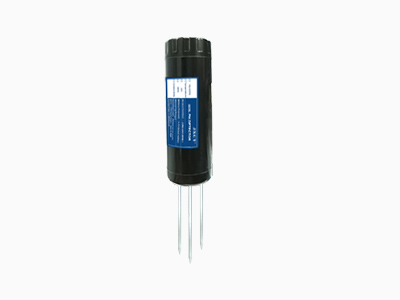Introduction
Soil analysis plays a crucial role in agriculture, environmental monitoring, and land management. Traditional soil analysis methods involve collecting samples, transporting them to a laboratory, and conducting various tests to determine soil parameters such as pH, nutrient content, moisture levels, and organic matter. However, these methods are time-consuming, labor-intensive, and often provide delayed results. The advent of wireless parameter sensors has revolutionized soil analysis, enabling real-time monitoring, data collection, and analysis. This article explores the future of soil analysis with wireless parameter sensors.

Wireless Parameter Sensors: An Overview
Wireless parameter sensors are small, compact devices that can be embedded in the soil to measure various parameters. These sensors are equipped with wireless communication capabilities, allowing them to transmit data to a central server or a mobile device. They can measure parameters such as pH, temperature, moisture levels, nutrient content, salinity, and organic matter. The sensors are battery-powered and can operate for extended periods without the need for frequent maintenance.
Benefits of Wireless Parameter Sensors
Real-time Monitoring: Wireless parameter sensors provide real-time data on soil conditions. This allows farmers and land managers to make informed decisions promptly. For example, if the moisture levels in the soil are low, farmers can irrigate the fields immediately, preventing crop damage.
Precision Agriculture: Wireless parameter sensors enable precision agriculture by providing accurate and localized data. Farmers can identify variations in soil conditions across their fields and apply fertilizers, water, and other inputs accordingly. This reduces input wastage and improves crop yield.
Cost-effective: Traditional soil analysis methods require multiple samples to be collected and analyzed, which can be expensive. Wireless parameter sensors eliminate the need for sample collection and laboratory testing, reducing costs significantly.
Environmental Monitoring: Wireless parameter sensors can be used for environmental monitoring, such as assessing soil quality in contaminated areas. They can detect the presence of pollutants, heavy metals, or other harmful substances, enabling timely intervention and remediation.

Challenges and Future Developments
While wireless parameter sensors have revolutionized soil analysis, there are still some challenges and areas for improvement. These include:
Sensor Calibration: Ensuring accurate and consistent measurements across different sensors can be challenging. Calibration protocols and standards need to be established to address this issue.
Data Management and Analysis: The large amount of data generated by wireless parameter sensors requires efficient management and analysis. Advanced data analytics techniques, such as machine learning and artificial intelligence, can be employed to extract meaningful insights from the data.
Sensor Longevity and Reliability: Ensuring the longevity and reliability of wireless parameter sensors is essential for their widespread adoption. Improvements in battery life, sensor durability, and wireless connectivity will enhance their performance and reliability.
The future developments in wireless parameter sensors for soil analysis include:
Miniaturization: Advancements in sensor technology will lead to smaller, more compact wireless parameter sensors. This will allow for easier deployment and integration into different soil types and environments.
Multi-parameter Sensors: Currently, wireless parameter sensors measure individual parameters. Future developments will focus on creating sensors that can measure multiple parameters simultaneously, providing a comprehensive analysis of soil conditions.
Autonomous Sensor Networks: Wireless parameter sensors can be integrated into autonomous sensor networks. These networks can communicate with each other and share data, enabling a more comprehensive and accurate analysis of soil conditions.
Conclusion
Wireless parameter sensors have transformed the field of soil analysis, enabling real-time monitoring, precision agriculture, and cost-effective solutions. Despite some challenges, ongoing developments in sensor technology, data management, and sensor networks will further enhance the capabilities of wireless parameter sensors. The future of soil analysis lies in the widespread adoption of these sensors, enabling sustainable agriculture, effective environmental monitoring, and efficient land management.